#new zealand conservation
Explore tagged Tumblr posts
Text
The Great ACT-NSW-NZ Trip, 2023-2024 - National Kiwi Centre, Hokitika
Further down the West Coast we stopped in Hokitika, because that might be the only chance we got to see Kiwi.
True, the Kiwi in question are captive, but the Centre is part of the network of conservation sites set up just in case something disasterous happens to the remaining wild population. And they had some nice displays of other animals, some of them confiscated from idiots who tried to smuggle them into the country.





As for the area itself - the name Hokitika translates as "to return directly" after Ngāi Tahu warriors launched an attack on the Ngāti Wairangi pā, and the chief of the invaders drowned while trying to cross the river. The leaderless army then turned around and went home. Europeans flooded into the area after the discovery of gold (honestly a much less useful rock than the pounamu the Ngāi Tahu were after) and for a while Hotikika was the port of entry on the West Coast. Despite the fact that the rivermouth was a nightmare stretch of water - between 1865 and 1867 there were 108 strandings, and 32 shipwrecks.
Also the locale for New Zealand's biggest manhunt after a local farmer went on a shooting rampage in 1941.
#hokitika#longfin eel#new zealand wildlife#new zealand conservation#powelliphanta#giant carnivorous snail
0 notes
Text
"Two wild kiwi chicks were born near Wellington, New Zealand, about a year after a reintroduction program began in the city, the Capital Kiwi Project announced last week. The fluffy, brown babies are the first to be born near the country’s capital in at least 150 years.
“This is very special for the team, which has been working hard for the last few years,” project founder Paul Ward tells the Agence France-Presse. The chicks are a “massive milestone for our goal of building a wild population of kiwi on Wellington’s back doorstep.”
These flightless, chicken-sized birds were once abundant across New Zealand, with the nation’s five species numbering an estimated 12 million individuals in total. But nonnative predators and habitat loss caused their populations to plummet. Today, approximately 68,000 kiwis remain....
Conservation and reintroduction programs, including the Capital Kiwi Project, have been working to restore a large-scale wild kiwi population for years. In 2022, the organization released 11 kiwis into the wild in Makara, a suburb about seven miles west of Wellington. Between February and May of 2023, another 52 birds were released, and 200 more are slated to be released over the next five years, reports Eva Corlett for the Guardian.
Along with reintroduction efforts, the project aimed to reduce threats from European stoats, also known as ermines. The mammals were brought to New Zealand in the 19th century in an attempt to eradicate another introduced creature: rabbits. But these weasel-like stoats are voracious predators and kill many of New Zealand’s native species, including kiwi chicks. Only about 5 percent of kiwi chicks survive to reach breeding age in areas where predators are not controlled, largely thanks to stoats. In areas under management, however, 50 to 60 percent survive. Knowing this, conservationists worked with 100 landowners across the bird’s 60,000-acre habitat to install 4,600 stoat traps.
Of the 63 adult kiwis now roaming the hilly farmlands of Makara, only about a quarter are being monitored—meaning more chicks will likely hatch in the near future. Conservationists will continue monitoring the two new chicks, though Ward tells the Guardian they still have a long way to go before they’re fully grown...
Over the years, the long-beaked birds have become a national symbol of New Zealand, with people who hail from the country often referred to as kiwis. The animals also hold special importance to the Māori people of New Zealand, who have cultural, spiritual and historic associations with the birds. Even the New Zealand dollar is sometimes referred to as the kiwi, and the bird is featured on the country’s dollar coin."
-via Smithsonian Magazine, December 6, 2023
#aotearoa#new zealand#kiwi#kiwi bird#endangered species#birds#ornithology#conservation#invasive species#good news#hope
3K notes
·
View notes
Text
A mountain in New Zealand considered an ancestor by Indigenous people was recognized as a legal person on Thursday after a new law granted it all the rights and responsibilities of a human being. Mount Taranaki — now known as Taranaki Maunga, its Māori name — is the latest natural feature to be granted personhood in New Zealand, which has ruled that a river and a stretch of sacred land are people before. The pristine, snow-capped dormant volcano is the second highest on New Zealand's North Island at 2,518 meters (8,261 feet) and a popular spot for tourism, hiking and snow sports.
Continue Reading.
257 notes
·
View notes
Text
Dandelion News - November 22-28
Like these weekly compilations? Tip me at $kaybarr1735 or check out my Dandelion Doodles!
1. Los Angeles becomes a sanctuary city for LGBTQ+ youth and immigrants as officials reject Project 2025

“The Los Angeles City Council voted unanimously Tuesday to pass the “sanctuary city” ordinance, shielding queer youth who travel to the city to receive gender-affirming care from prosecution, as well as preventing city resources from being used in immigration enforcement[….]”
2. Huge deforested areas in the tropics could regenerate naturally, study finds

“Cleared or degraded tropical forests around the world covering a combined area larger than Saudi Arabia could regrow on its own, according to new research published Oct. 30 in the journal Nature. [… T]he permanence of regrown forests is critically important to the benefits it can provide to biodiversity and the climate.”
3. Minnesota tribe could soon get a solar-powered resilience hub

“A pair of developers are working to build a microgrid at an elementary school and community center on the White Earth Reservation in northern Minnesota [… which would] provide about 12 hours worth of backup power for residents to be able to charge cell phones, power medical equipment, or stay warm in the event of a power outage.”
4. An exchange between Indonesia and Tanzania supports food security and ocean health
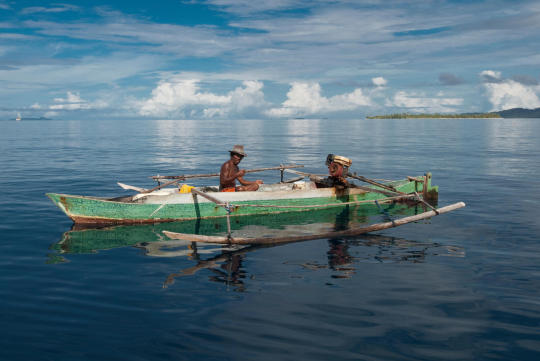
“Around the world, WWF helps manage […] both traditional sustainability-oriented management and science-based practices. This combination supports long-term food security and biodiversity goals. […] Local ownership and management are […] key to achieving stable fisheries and social and economic benefits.”
5. Spiky blue devils and chocolate lilies: Victorian grassland bursts with wildflowers after ecological ‘reset’

“About 70 native plant species could be found within the site, including […] four endangered species of orchid. […] Careful management, including an ecological burn in May and weed control measures to reduce pasture grasses, laid the groundwork for wildflowers to thrive.”
6. Vast forests, wetlands and lakes conserved [in Ontario]

“A vast 970-hectare area featuring thriving forests, wetlands and crystal-clear lakes northeast of Sault Ste. Marie is now protected[….] The intact forests, lakes, wetlands and shorelines support high biodiversity and are home to many threatened species[….]”
7. A New Era of Compassion: How Suncoast Humane Society is Changing Animal Welfare for Good
“Our campus includes outdoor play areas, trails, and even a small swimming pool to encourage animals to stay active, explore, and simply be themselves.”
8. Building climate resilient cocoa farming in West Africa
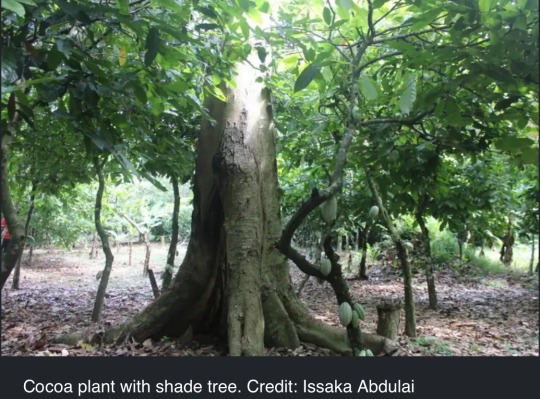
“[… A] promising new approach to improve climate resilience in cocoa agroforestry across West Africa […] focuses on the critical role of leaf "phenology"—the seasonal changes in leaf cycles—in trees providing shade in managing climate impacts. [… S]hade trees that lose their leaves entirely during the dry season proved especially beneficial in maintaining soil moisture[….]”
9. New Zealanders save more than 30 stranded whales by lifting them on sheets

“[The Department of Conservation] praised as “incredible” the efforts made by hundreds of people to help save the foundering pod. “It’s amazing to witness the genuine care and compassion people have shown toward these magnificent animals[….]””
10. 'A really sobering moment:' English zoo fights extinction of freshwater Boxer pupfish

“Whipsnade Zoo aquarists were recently told by conservation partners that that the world's last remaining Boxer pupfish was in their care, prompting the zoo to carry out the immediate transport of all the "precious" Boxer pupfish eggs to another local conservation and education charity in the name of species preservation.”
November 15-21 news here | (all credit for images and written material can be found at the source linked; I don’t claim credit for anything but curating.)
#hopepunk#good news#los angeles#us politics#lgbt+#immigrants#deforestation#nature#minnesota#native american#indigenous#electricity#solar panels#solar energy#solar power#ocean#fishing#food insecurity#wildflowers#native wildflowers#native plants#conservation#canada#animal shelters#humane society#agroforestry#new zealand#whale#fish#endangered
126 notes
·
View notes
Text
#good news#nature#science#environmentalism#animals#environment#conservation#bugs#insects#new zealand
1K notes
·
View notes
Text
Many penguin species huddle together in massive colonies, but pairs of yellow-eyed penguins go out of their way to be alone, nesting deep in New Zealand’s scrublands and forests out of sight of other penguins. When pairs reunite at the nest after one has been away fishing, they greet each other with a piercing cry that Thor Elley, an endangered avian species researcher at the University of Otago with Māori roots, likens to “a whistling tea kettle rolling down a hill.” The species’ Māori name, hoiho, roughly translates to “noise shouter.”
Screaming and antisocial behavior may not seem like beloved traits, but these penguins are revered in Māori culture as taonga, or treasure, even gracing the country’s $5 bill. They are “protected by sacred origins,” Elley says.
But one of New Zealand’s favorite endemic birds is also one of its rarest. The International Union for Conservation of Nature estimates that only between 2,600 and 3,000 hoiho exist. About a third live on New Zealand’s South Island and nearby Stewart Island. The rest inhabit sub-Antarctic islands some 300 miles to the south. In the past 15 years, the northern population has plummeted by roughly 75 percent, and researchers expect that group could disappear within the next two decades if the trend continues.
The decline stems from a litany of factors. Red cod, once a pillar of the hoiho diet, has become scarce, and blue cod, although larger, are harder to catch, eat and feed to their chicks than other staple fish. Penguins also drown each year in commercial gillnets. And a pair of diseases, avian diphtheria and, since 2019, a mysterious and fatal respiratory illness, also infect virtually every chick. Janelle Wierenga, a veterinary scientist at the University of Otago and Massey University, says potential vaccines and drugs are likely years away.
To keep the species afloat, wildlife hospitals and conservation groups have taken the radical step of removing every single hoiho chick on the South Island from its nest and placing it in human care for its first week or so of life. Chicks are treated with antibiotics to heal the mouth sores caused by avian diphtheria. They’re also fed fish smoothies to boost their strength. It’s unclear how, but this extra care prevents chicks from developing the respiratory disease. “I’ve got the feeling that the diseases are a secondary problem, and the primary problem is the penguins don’t get the sustenance they need,” says Thomas Mattern, an ecologist at the University of Otago.
In 2023, the Dunedin Wildlife Hospital hand-reared 214 hoiho chicks. Without human intervention, 50 to 70 percent of those chicks would have died, Lisa Argilla, the hospital’s senior wildlife veterinarian and director, estimates. But these herculean efforts can only offer a short-term reprieve. “We are trying to buy this population as much time as we can,” she says. “You feel like you’re fighting a losing battle, but we couldn’t live with ourselves if we didn’t fight for these penguins.”
109 notes
·
View notes
Text
You wouldn't ride dirt bikes through a kiwi sanctuary, so why is it okay to race boats in Hector's dolphin habitat?
Next month, the SailGP competition will be taking place in Lyttelton Harbour, near Christchurch in New Zealand. This competition will involve boats racing at speeds of 100 km/h or faster, through areas where endangered Hector's dolphins are known to inhabit. At these speeds, if a dolphin is spotted ahead of the boat, it will be too late to change their course, and it's almost certain that a strike from one of these boats would kill a dolphin. What makes this even worse is that the race will be happening during the breeding season, when Hector's dolphins move closer to the coastline to birth and nurse their calves, making them even more vulnerable.
These tiny dolphins need our protection now more than ever - they already face threats from fisheries bycatch and toxoplasmosis. I am ashamed of the lack of responsibility my country has taken to ensure the continued survival of the Hector's and Maui's dolphins. This fiasco is just the latest in a series of failures to prioritize the welfare and safety of endangered marine life in New Zealand.
We wouldn't let people ride dirt bikes through a kiwi sanctuary. There would be public outcry if people were driving through penguin colonies. We should show that same level of care and concern for our endangered marine mammals. The wealth and influence of New Zealand's sailing community should not make them immune to these standards.

Image credit: Ocean Treasures Memorial Library
224 notes
·
View notes
Text

this bizarre politicisation of the existence of basic empathy driven fear and horror really confounds me.
when the christchurch attack happened, much of my country was significantly traumatised. i remember watching the news for hours, just crying. it was terrible. because people died. in a really horrible way. and because country kinship exists, you go 'oh, i probably knew someone who died or know someone who knew someone who died'. my roommate had friends at the mosque.
i'm not talking about the politicisation of the event in terms of how the american government used it to justify the invasion of iraq, i'm not talking about the politicisation of the event to spur racism and nationalism and xenophobia. i'm not talking about the politicisation of the event in terms of being used as an excuse to further push into a surveillance state, as per the snowden files.
i'm just talking about the mocking, minimising, and derision of what is essentially just a large group of people that witnessed something horrible and have strong feelings and memories because human beings have empathy. no amount of 'well, other people have it worse elsewhere' changes that. by that logic, no one should be scared and upset about mass shootings on the other side of the country, no oppressor group actually feels bad about oppression because 'it's not happening to you', countries that dealt well with covid shouldn't have any residual issues from seeing what other countries went through, and vicarious/collective trauma would not exist as a psychological concept.
#i think people have swung so far against conservatives and alt righters swinging 9/11 around as a political weapon#that includes memes and all sorts#that it has become an abstract concept that people don't really seem to proceed was a mass death event of living innocent people#i think especially because a lot of the people doing this were either toddlers or not even born#it feels extremely unsettling when i (a born 1999 new zealander) have more sadness regarding 9/11 than americans around my age
141 notes
·
View notes
Text
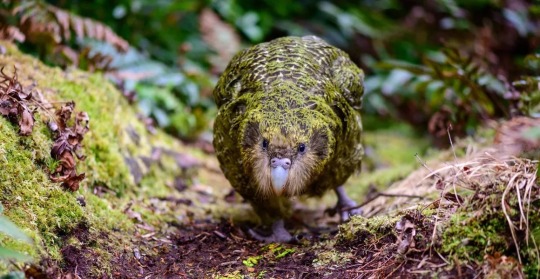
Photo © Jake Osborne
Meet the Kākāpō, an Endangered Flightless Parrot That Smells Good, and Looks Like a Muppet
The Kākāpō, a large flightless parrot, which is also called the Owl Parrot and is found in New Zealand.
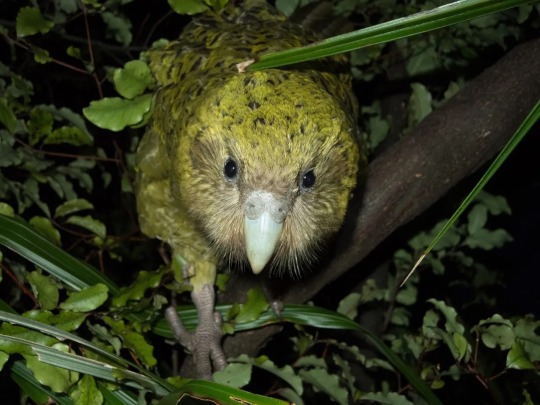
Photo: Andrew Digby/New Zealand Department Of Conservation
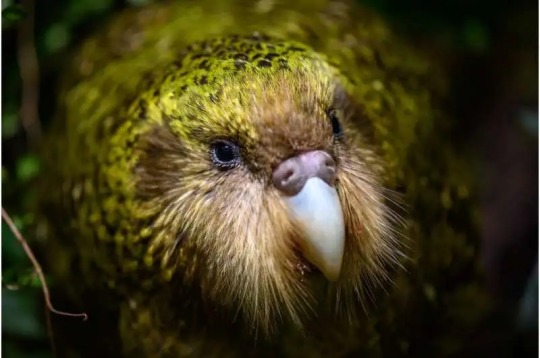
Photo By Jake Osborne
#kakapo#photographer#jake osborne#bird photography#parrot#nature#new zealand#owl parrot#andrew digby#new zealand department of conservation
140 notes
·
View notes
Text

The Kiwi Conservation Team at work.


Look at this good boi.


I had no idea they were this big.
138 notes
·
View notes
Text
Not fandom related but the Miami Zoo currently has one of my country’s national birds which they’re MISTREATING.
We’d like it back now luv x
If it was a bald eagle, y’all would be rioting in the streets.
274 notes
·
View notes
Text

After years of negotiations, New Zealand has granted Mt Taranaki the same legal rights as a person, recognizing its cultural and ancestral significance to Māori tribes. Under the new law, the mountain will effectively own itself, co-managed by local iwi and the government.
The agreement also addresses historical injustices, including colonial land confiscations, and restores the mountain’s Māori name. Hundreds of Māori gathered as the bill was passed, marking a step toward reconciliation. This follows similar legal recognitions for the Urewera forest (2014) and Whanganui River (2017), reinforcing the Māori belief that nature is a living entity.
#general knowledge#affairsmastery#generalknowledge#current events#current news#upscaspirants#upsc#generalknowledgeindia#upscpreparation#upsccoaching#upsc2025#upsc current affairs#breaking news#world news#news#newzeland#mountains#maori#maori culture#whanganui#conservation#conservatism#nature#trees#forest#landscape#taranaki#new zealand#ancient tribe#trees and forests
15 notes
·
View notes
Text

Kiwi chicks born in the wild in New Zealand’s capital for first time in over a century
Two kiwi chicks have been born in the wild in Wellington for the first time in over 150 years. The two chicks, which were born in Makara, a suburb that is 25 minutes away from the city centre, came a year after Capital Kiwi Project reintroduced the national bird to New Zealand’s capital. The flightless birds, including the additional 18 chicks that will be hatched as part of the project, will be monitored by transmitters, according to the project’s Instagram post...
Read more: https://www.straitstimes.com/asia/australianz/kiwi-chicks-born-in-new-zealand-s-capital-for-first-time-in-over-a-century
89 notes
·
View notes
Text
I wanna draw attention to a really cool place operating in Aotearoa NZ: Wildbase Recovery Centre!
Based in Palmerston North, these guys rehabilitate native wildlife to be reintroduced back into the place where they were found pre-recovery. They take patients from the local wildlife hospital up at the university and work on preparing them for release.
They're free to the public and educate people on wildlife and nature in Aotearoa, and how people can help conserve it! They also have some animals are are unable to be released that serve as ambassador animals - my personal favourites are the resident kākā pair, Tāne and Māia, who you can learn about here.
These guys are known nationwide for their amazing work. If you're interested in supporting them, you can do so here! This helps them with maintenance, operational costs, helps keep public education free, and helps many of the programmes they do - this includes the rehabilitations and their captive breeding programmes (Whio/Blue duck programme here + Pāteke/Brown teal programme here)
(You can also find these guys across social media - FB/Twitter/Instagram, and interaction helps them keep up funding from local government and generate interest!)
275 notes
·
View notes
Text
77 notes
·
View notes